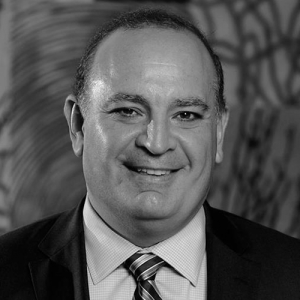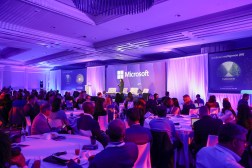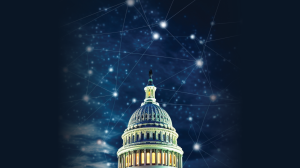- Sponsored
- Modernization
Escape the technology debt trap by infusing innovation into managed services contracts

Sam Kapreilian is a principal at Deloitte Consulting LLP and currently serves as the Operate Marketplace Leader for its government and public services (GPS) business. He has more than 25 years’ experience helping large-scale organizations across the public and private sector transform their business and IT operations.
It’s not surprising that the expectations citizens have for digital government are placing some serious demands on federal agencies to modernize and secure their systems. Pick any of your favorite online retailers, and that is the experience constituents expect when they interact with agencies online and through mobile applications.

Sam Kapreilian, Principal, Deloitte
Today, federal agencies try but many still struggle to respond in the timely and user-friendly way that people expect as the norm. Legacy systems and the technical debt they acquire over time can handcuff organizations from executing new, bolder investment strategies.
In 2009, the federal government spent only two-thirds of its IT budget on maintaining its systems and related processes. By 2019, the number had risen to four-fifths. Only 20% of federal spending at that point went for new software packages; the rest went to keeping legacy systems going. The implication is clear: government is struggling to maintain legacy systems, let alone keep up with the rapid pace of new technology. Additionally, agencies may find themselves constrained by the expertise they have rather than the technology expertise they need.
Managed services (outsourcing) contracts represent a sizeable portion of any agency’s budget, however many of these contracts were typically written 3-10 years ago and, as a result, they fall short on today’s needs for innovation, modernization, high-end skills and customer-centricity. Agencies must resist the temptation to reissue their existing contracts with only minor tweaks and, instead, think boldly and thoughtfully to incorporate the needs and expectations of customers and legislative bodies.
This is easier said than done, as most organizations have difficulty in first unifying their vision of the future and second aligning that vision with the operating and financial realities of today. This, combined with short-staffed procurement teams and difficult-to-pin-down subject matter experts, results in many agencies sticking with the status quo.
Keeping pace with IT skills needs
The traditional approach to managed services contracts has often sought to fill empty seats or augment agency IT staffs at a lower price. In other cases, agencies seek to outsource with hopes to modernize and innovate, but all too often they fall short. Agencies can shortchange themselves if they focus on like-for-like staffing needs of today, instead of laying out a more holistic view of their modernization goals and their future needs — with clear metrics and milestones, and the IT expertise they will need to get there.
The war for talent is on. Top tech and commercial firms are vying for the same scarce skills that government so desperately needs. One challenge we hear often from Deloitte’s federal clients stems from the complicated hiring and recruiting processes they must follow, and compensation models that don’t always align with marketplace realities. Thus, it becomes difficult to fill critical talent gaps in today’s hyper-competitive job market.
As agencies look to modernize, they must also think about operating differently. For example, under the vision of the FDA deputy CFO, Sahra Torres-Rivera, the FDA wanted to adopt robotic process automation (RPA) and other intelligent automation to improve efficiency, effectiveness, and customer service. Deloitte supported the FDA in creating automations that provided insights on actions needed to pay invoices; increased compliance and reporting of interagency, travel approval and spend; and increased awareness of FDA’s user fees policies and procedures.
The automations that Deloitte developed for the FDA Office of Finance are saving over 12,000 hours of manual labor annually, freeing up already resource-strained employees to work on higher-value activities and allowing employees to develop quicker insights when validating and analyzing results. The agency also still requires people to work with the automations, providing training and processes to assist.
Organizations often underestimate the importance of creating new team structures and developing new metrics and reporting. Many commercial organizations are investing heavily in new automations and tools and the team structures and metrics to support them. Many government organizations need to catch up.
That, in part, is what prompted Deloitte GPS to develop its Operate organization, which approaches managed and outsourced services through the lens of mission outcomes via modernized systems and processes. We work with our clients to help them achieve their innovation goals and to help them become digital enterprises; all while maintaining the expectations of their constituents. We are especially mindful of the pace and readiness of many agencies to change, as well as the financial/budgetary realities they face. We bring all this together to help government agencies become digital enterprises, aspiring to mirror their commercial counterparts. We understand how to keep business operations stable as we help agencies infuse a variety of technologies including cloud, machine learning, artificial intelligence and cybersecurity to better serve their customers.
Taking a more holistic approach
The pressure is mounting to modernize business and IT operations and meet customer service expectations in line with standards set by commercial enterprises. Government agencies’ legacy systems and processes weren’t designed with the agility to handle increased network traffic and surges in customer demand — especially at the levels witnessed during the pandemic — nor do they provide the user experience constituents have come to expect in the year 2021.
Deloitte starts with a deep understanding of an agency’s mission and objectives to help it think about newer, more advanced approaches in the way it operates. Agencies need to rely on a trusted adviser to help navigate the multitude of technology options today, while determining the appropriate pace and phasing to keep the mission on track while transforming. In doing so, they increase the likelihood of positive outcomes, including lower overall operating costs, and improved customer satisfaction. Taking this broad view translates into providing agencies faster access to next generation capabilities.
A broad view is critical; however, a tactical execution plan is equally important. Agencies should prioritize and focus on:
- Artificial intelligence to create insights across large numbers of transactions and data sets; and to provide assistive tools to employees and automated actions to minimize manual/repetitive efforts.
- Cloud migration to manage new environments and applications both safely and securely.
- Cybersecurity talent and resources to manage a growing attack surface as well as the ability to stay ahead of new threats.
Writing modern RFPs and contracts to meet current needs and expectations
When Deloitte’s GPS Operate leaders talk with our clients about how they write contract renewals and requests for proposals, they stress the importance of shifting focus from filling chairs with bodies to driving lower costs and increasing innovation. This is accomplished through modernizing their systems and processes to meet the expectations of today’s customers, service members, and constituents. Many of the leading practices we see include:
- Clearly articulating the vision and objectives for modernization, innovation and continuous improvement.
- Requiring respondents to demonstrate their deep understanding of the mission, and how their processes, tools and assets can help to achieve the objectives.
- Laying out a timeline with clear milestones, objectives and metrics in a roadmap format to bring the expected results of the vision to life.
- Including language around budget and cost objectives to incentivize the managed services provider to recommend strategies that are in the agency’s best long-term interest.
Ultimately, it is important that agency leaders think differently about how they work with a managed services provider so that they can access the most modern solutions, tap into the latest innovations, acquire critical talent, and begin to lower their overall IT operations costs. All of this should be under the specter of an unrepenting focus on mission and customer satisfaction.
Learn more about how Deloitte’s GPS Operate can help your organization innovate with pace and purpose to advance your mission impact.
Connect with Sam Kapreilian on Twitter, LinkedIn or email skapreilian@gmail.com.




